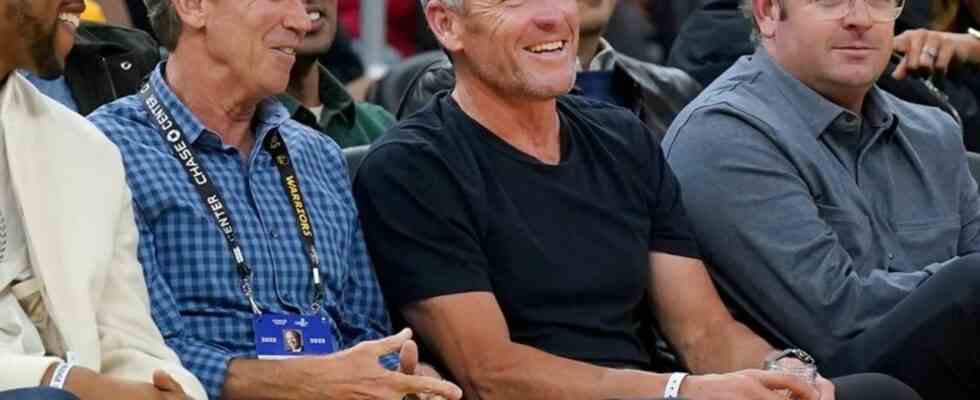cycling
Even with today’s knowledge: Armstrong “wouldn’t change anything”
In January 2013, Lance Armstrong (M) made a doping confession to Oprah Winfrey. photo
© Jeff Chiu/AP/dpa
In January 2013, Lance Armstrong made a spectacular confession to doping on TV with star talker Oprah Winfrey. The former Radstar has to pay dearly for his cheating system.
Lance Armstrong was in Paris recently. By bike across the Place de la Concorde, up to the Arc de Triomphe and down the Champs Élysées. Just like before, when he was received seven times in the French capital as the winner of the Tour de France.
Only this time Armstrong was virtually on his Zwift interactive roller trainer. Because Armstrong is still an undesirable person ten years after his spectacular doping confession in France on the Tour and in cycling in general.
In January 2013, the Armstrong monument was finally brought down. The Texan had admitted everything to star talker Oprah Winfrey. EPO, testosterone, cortisone, growth hormones and blood doping? His answer was always the same: “Yes, yes, yes, yes, yes”. The former cycling star recently admitted on Joe Pompliano’s podcast “Lance Armstrong: The Rise, Fall and Redemption of a Cycling Legend” that he didn’t really feel better after the interview. “But I said to myself, I’d rather do it this way and pop the balloon.”
Armstrong today: “I wouldn’t change anything”
Armstrong had previously been banned for life by the American anti-doping agency USADA. US investigators Jeff Novitzky and USADA boss Travis Tygart meticulously reconstructed the machinations of the power man. Today, a grey-haired Armstrong in a white shirt with rolled-up sleeves can talk about the difficult times with a certain ease, back then it was about his existence. Letters from insurance companies fluttered into the house every week, and the whole affair cost him $111 million. “I was afraid that I wouldn’t be able to take care of my family,” recalls Jan Ullrich’s former rival, with whom he is now friends.
A spot-on investment from 2009 turned out to be a lifeline, when he put $100,000 in a fund owned by investor Chris Sacca, who at the time was investing in the start-up company Uber, among other things. Armstrong’s use is said to have increased 300-fold. “That helped,” said the 51-year-old. The numbers were “magic”. The founder of the Livestrong Cancer Foundation has always had business acumen.
So Armstrong seems to have found his new place in life today. He is now married to his long-term partner Anna Hansen, in Austin he runs a bicycle shop including a coffee shop and once a week he is on the air in his own podcast, occasionally meeting old companions and rivals such as Ullrich, George Hincapie and Bradley Wiggins . “I managed to land on my feet. I have five beautiful, healthy children. I wouldn’t change a thing,” said Armstrong.
He no longer has access to cycling. “I only report about it,” emphasizes Armstrong and does not hide the fact that his current status annoys him. “If I had been just any cyclist, none of this would have happened. The story was too good,” says Armstrong. A cancer sufferer who wins the Tour de France. It sounds like Armstrong would have liked a second chance in cycling.
Armstrong: “It was the perfect drug”
Former Telekom professional Rolf Aldag, who also admitted to doping and is now head of sports at the Bora-hansgrohe team, assumes that Armstrong’s case is “legally okay” from a sporting point of view. “There are rules for that and Lance certainly had enough lawyers. On the other hand, it’s about the moral, ethical side and I’m probably the wrong person to judge that,” said Aldag in an interview with the German Press Agency.
There is no rider listed in the Tour’s list of winners from 1999 to 2005. “You can’t go seven years without a winner. There has to be a winner there. It doesn’t make sense. Then promote someone else,” Armstrong said. The only problem is that the runners-up at the time around Ullrich and Co. hardly have a better reputation.
Today, Armstrong would “like to go back and take some things back” from a time when he terrorized people like former team manager Emma O’Reilly or former professional cyclists Christophe Bassons and Filippo Simeoni who didn’t want to get involved in the dirty doping business. But even with today’s knowledge, he would probably have resorted to doping at the time. “It was the perfect doping agent. A ten percent increase in performance and only detectable in the body for four hours,” says Armstrong, who is still cycling at home in Austin or in Aspen, Colorado. But he prefers to ride the home trainer along the Champs Élysées.

